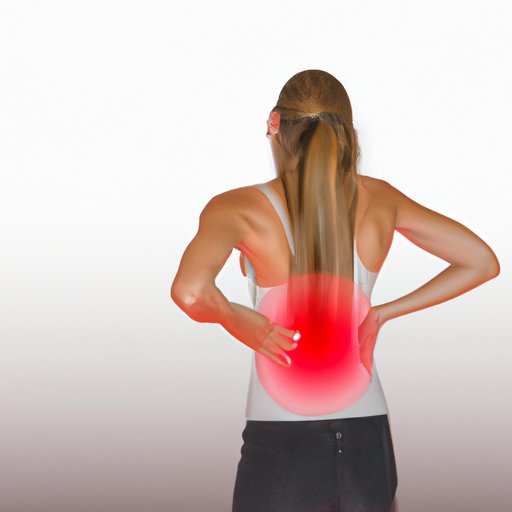
Introduction
Upper back pain is a common condition that affects many people worldwide. It can be caused by poor posture, muscle strain or injury, herniated disc, and osteoarthritis. Upper back pain can be uncomfortable and limiting, affecting daily activities, but it can be treated or relieved by various techniques. This article explores how to relieve upper back pain through stretching and exercises, massage techniques, acupressure, natural remedies, good posture, and relaxation techniques.

Common Causes of Upper Back Pain and How to Treat Them
One of the leading causes of upper back pain is poor posture. Some people tend to slouch, hunch their shoulders, and crane their necks forward, leading to strain on the upper back muscles and spine. Muscle strain or injury can also cause upper back pain, and it usually occurs from sudden movement or overuse of the back muscles. Herniated disc, which is a cushion-like pad between the vertebrae, can also cause upper back pain when the disc slips out of place, causing pressure on the surrounding nerves. Osteoarthritis, a joint disease, can cause inflammation, stiffness, and pain in the upper back. Treatment options for upper back pain include rest, physiotherapy, medication, and surgery, depending on the severity of the pain.
15 Effective Stretches and Exercises to Relieve Upper Back Pain
The importance of stretching can never be overemphasized, especially for people with upper back pain. Stretching helps to loosen tight muscles, improve posture, and increase flexibility. Neck and shoulder rolls are simple stretches that can help relieve tension in the upper back muscles. Wall angels, thoracic extension, and cat-camel stretch are other stretches that can help alleviate upper back pain. Other exercises like planks, yoga, and pilates can also help to strengthen the core, improve posture, and reduce upper back pain.
Top 7 Massage Techniques for Soothing Upper Back Pain
Massage therapy is an effective treatment option for upper back pain. Massage helps to relax tight muscles, improve circulation, and reduce inflammation. Trigger point massage involves applying pressure to specific trigger points to alleviate pain and tension. Deep tissue massage involves using deeper pressure to reach the underlying muscles and tissues. Shiatsu massage, Swedish massage, and other massage techniques can also help to soothe upper back pain.
Acupressure Points for Upper Back Pain Relief: A Comprehensive Guide
Acupressure is an ancient Chinese therapy that involves applying pressure to specific points along the body’s meridian points. These points are believed to be connected to the body’s energy flow, and pressure can help to restore balance and relieve pain. Acupressure points for upper back pain include the shoulder well point, gallbladder 21, and the bladder 13 point. Applying pressure to these points can help to relieve upper back pain.
10 Natural Remedies for Upper Back Pain That Actually Work
Natural remedies are a great option for people who prefer to use alternative treatments for upper back pain. Essential oils like peppermint, lavender, and eucalyptus can help to reduce pain and inflammation. Epsom salt baths, hot and cold compresses, turmeric, and magnesium are other natural remedies that can help to relieve upper back pain. Before using any natural remedies, it’s essential to consult a healthcare provider.
How Good Posture Can Improve Your Upper Back Pain and How to Achieve It
Good posture is crucial for reducing upper back pain. It helps to reduce strain on the upper back muscles and spine, improve breathing, and increase energy levels. Tips for improving posture include sitting up straight, standing tall, and keeping your shoulders back and relaxed. Exercises like planks and bird-dog can help to strengthen the core muscles, which plays an essential role in maintaining good posture.
Relaxation Techniques for Upper Back Pain: Try These Easy Methods
Stress is a significant contributor to upper back pain. Relaxation techniques like deep breathing, yoga, meditation, and mindfulness can help to reduce stress levels and relieve upper back pain. Deep breathing exercises involve taking slow, deep breaths from the diaphragm, which helps to calm the mind and body. Yoga involves slow, controlled movements that help to improve flexibility, reduce stress, and alleviate pain.
Conclusion
This article has covered various techniques for relieving upper back pain, including stretching and exercises, massage techniques, acupressure, natural remedies, good posture, and relaxation techniques. It’s essential to try different techniques to find the one that works best for you. Always consult a healthcare provider before trying any new treatments for upper back pain. With commitment and patience, anyone can relieve upper back pain and improve their quality of life.




